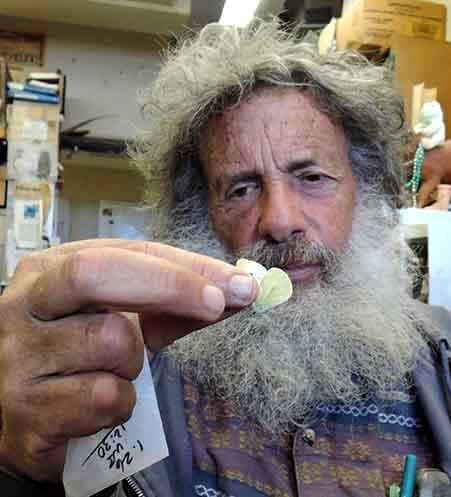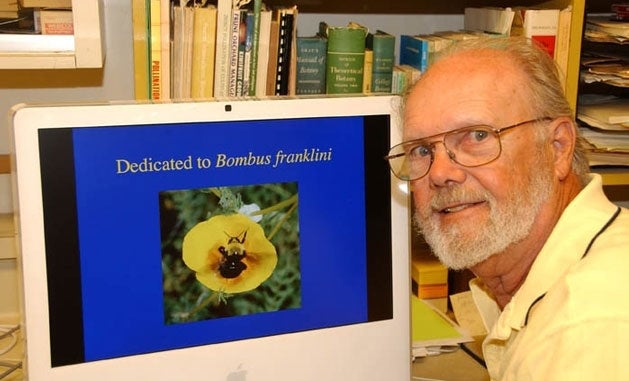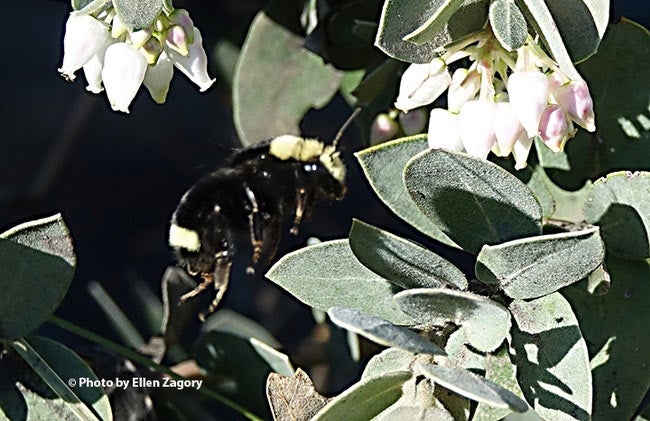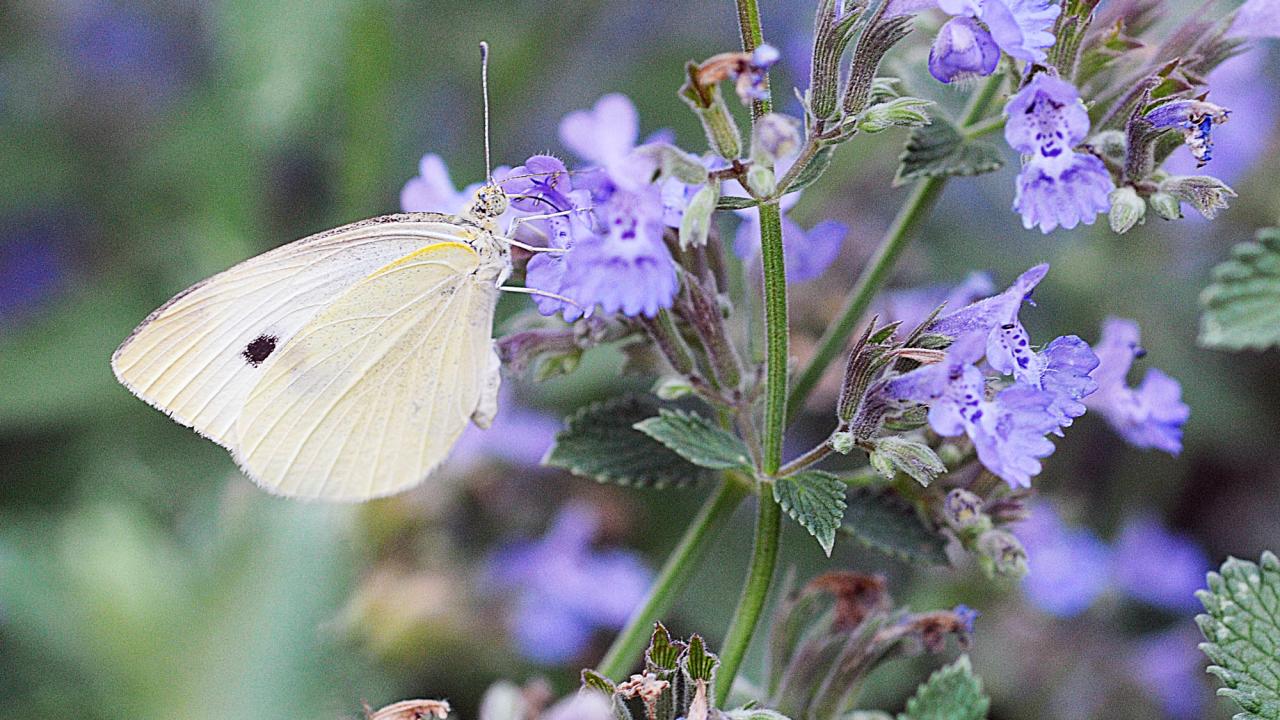Quick Summary
- We’re looking for the “first” of the new year in 2 contests
- For environmental awareness and climate change research
- Photograph a bumblebee, capture a cabbage white butterfly
- Pitcher of beer is prize in half-century-old butterfly contest
The countdown to New Year’s also serves as a countdown to UC Davis’ “first-of-the-year” bumblebee and cabbage white butterfly contests, the former in its third year and the latter going back 50 years.
One winner receives a specially designed coffee cup, the other a pitcher of beer ... but the real prizes are contributing to environmental awareness and climate change research.

Art Shapiro, distinguished professor, Department of Evolution and Ecology, College of Biological Sciences, started his Beer for a Butterfly Contest in 1972 in connection with his study of the cabbage white’s biological response to climate change. The contest asks the public to help him record the date each year of Pieris rapae’s first flight in Yolo, Solano or Sacramento counties.
The contest returns this year after the pandemic prompted two cancellations: 2021 (which would have been the 50th annual) and 2022. Still, Shapiro recorded his own first sightings, giving him 51 consecutive years of data (1972-2022) that show Jan. 20 as the average date of the cabbage white's first flight — about a week earlier than 30 years ago. See Shapiro’s research website.
Now comes 2023: the 52nd year of data collection and the 50th-anniversary contest (the anniversary we missed in 2021). Here are the rules:
- Specimen must be captured on or after Jan. 1, must be an adult and must be brought in alive to the Department of Evolution and Ecology, 2320 Storer Hall, during work hours: 8 a.m.-5 p.m. Monday through Friday.
- The receptionist will check to ensure the specimen in alive, and, if it is, place it in a refrigerator pending verification as a cabbage white. If you cannot turn in your specimen right away (say, if you capture it on a weekend or holiday) you can keep it refrigerated for a few days — do not freeze it.
- Provide the following information with your specimen: date and location of the capture, and the exact time; and your contact information (name, address and phone number, or email address).
The prize is a pitcher of beer or its equivalent, and Shapiro is the sole judge. Something to remember as you head out to look for cabbage whites: Shapiro is hard to beat in his own contest, losing only four times, always to graduate students.

Honoring Robbin Thorp
The bumblebee contest is a tribute to Robbin Thorp, distinguished professor emeritus of entomology, College of Agricultural and Environmental Sciences, global authority on bees, and tireless advocate of pollinator species protection and conservation.
He “retired” in 1994 after 30 years on the UC Davis faculty, but continued working until several weeks before he died in 2019 at the age of 85.
He looked forward every year to seeing the first bumblebee in the area — thus providing the impetus for the Robbin Thorp Memorial First Bumblebee of the Year Contest. The Bohart Museum of Entomology started and sponsored the contest in 2021 and continues to organize and sponsor it annually. Distinguished Professor Lynn Kimsey, director of the museum, is the contest coordinator.
Unlike the Beer for a Butterfly Contest, which asks for live specimens, the bumblebee contest asks for photos only. They must be taken in the wild Jan. 1 or later and sent by email to the Bohart Museum of Entomology (be sure to note the time and date of your image and where it was taken).
The first verified bumblebee picture to come in will earn its photographer a coffee cup with artwork of the endangered Franklin’s bumblebee — the bee that Thorp monitored on the California-Oregon border for decades. Previous winners are ineligible.
Credit for the cup goes to photographer Brennen Dyer, Bohart collections manager, and designer Fran Keller, who earned her Ph.D. in entomology at UC Davis in 2014 and is now a professor at Folsom Lake College.

If you’re looking ...
... for cabbage whites — P. rapae inhabits vacant lots, fields and gardens where weedy mustards, the butterfly’s host plants, grow, according to Shapiro. He describes the butterflies as follows: The male is white. The female is often slightly buffy [light brownish yellow, ocherous]; the underside of the hind wing and apex of the forewing may be distinctly yellow and normally have a gray cast. The black dots and apical spot on the upper side tend to be faint or even disappear really early in the season. Tip: Shapiro has captured many of his contest winners in mustard patches near West Sacramento railroad tracks.
... for bumblebees — Tip: Look around manzanita in the Arboretum, where all previous winning bumblebee winners have been photographed. The 2022 co-winners photographed their bumblebees as they foraged on manzanita in different places at the same time, and the 2021 winner photographed his bumblebee in a manzanita patch.
Kathy Keatley Garvey, communications specialist, Department of Entomology and Nematology, contributed to this report.
Media Resources
Dateline Staff: Dave Jones, editor, 530-752-6556, dateline@ucdavis.edu; Cody Kitaura, News and Media Relations specialist, 530-752-1932, kitaura@ucdavis.edu.
